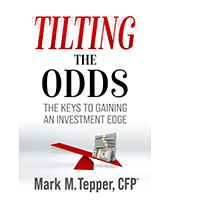H4L
After a great January, stocks have been taking a bit of a break. Why?
I’d say several reasons. The powerful, initial surge in liquidity settled down, effectively reducing the amount of money likely to go to the market. One sign of that is the dollar bottoming out on the first market day of February. Another big problem is that the surge in liquidity created a surge in inflation. In turn, that has really hurt the ideas of a soft landing or no landing. Instead, the higher for longer (H4L) rates idea has regained ascendance. The Fed intends to raise rates above 5% and keep them there, something the market is now embracing.
I’d argue the market that has fought the H4L idea the most is the stock market. This is perhaps due to an aggressive options market, which had been eager to price in a move back towards a Goldilocks environment.
Frankly, that could be right eventually, but right now, we’re playing tug of war between markets and the Fed. The stock market wants to eagerly price in the upturn that will happen once the Fed pivots, but the Fed won’t pivot as long as the economy and markets still look good. With our highly financialized economy, markets and economy are practically the same thing, so it’s sort of a stalemate.
This is a similar situation to last year, where market participants spent a lot of energy protecting against the downside. Perversely, because that was such a focus, the market never really had a volatility spike. Instead, we just had a downward grind. Similarly, the desire to participate in the next upswing is preventing it from happening, as assets boost the economy and prevent any kind of clearing event to make the Fed shift.

What happens? Like last year, presumably we grind lower, as conditions slowly deteriorate, unless we get that clearing event. A clearing event would be something bad enough to break this cycle, which presumably would be inflation getting too high or the economy getting too bad. Until then, we just grind lower.
Could we still get a soft landing? It seems unlikely, and the market has moved away from pricing that in. Leading indicators say we’re in trouble, while lagging indicators say nothing is too bad. That’s consistent with poor outcomes, as lagging indicators catch up to leading indicators.
While the market seems fairly reluctant to price problems in, I do think there are a variety of potential issues out there. There’s geopolitical risk with China or Russia. There’s potential credit risk, perhaps from commercial real estate, asset backed securities, or companies that were depending on eternal access to cheap liquidity. Inflation could continue to push back up. Liquidity could more strongly reassert its downward path. Economies, international or domestic, could accelerate their decline.
Fundamentally, larger markets, such as currencies and fixed income, seem pretty clear in saying the Goldilocks trade is on the way out. The stock market, however, seems awfully slow to price in much of anything reflecting real trouble. It’s always easiest to protect yourself when nobody else is trying to. Roughly three weeks into pricing what looks like a trend change, you wouldn’t be picking the bottom on a more lasting shift, but the key question is if this shift continues and gets worse. Historically, when something like currency markets change trend, that likely sticks. I think it makes sense to push against the Goldilocks narrative and stick with the more conservative investments largely like the ones that outperformed last year.
 Enter your information below, and we will email you our new eBook, Tilting the Odds
Enter your information below, and we will email you our new eBook, Tilting the Odds




